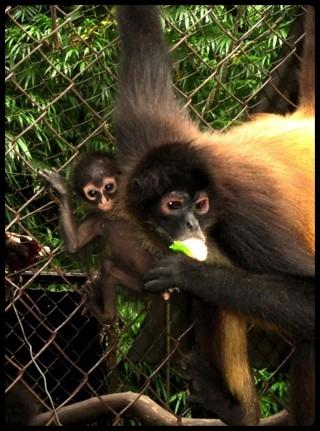Introduction

Primates' sense of smell is a subject that has been widely debated.
Features such as the size of their olfactory brain structures or the number of functional olfactory receptor genes, have lead to the conclusion that primates possess a poorly developed sense of smell. However, there is no evidence of correlation between these features and their olfactory performance.
In fact, it is well known that primates rely on their sense of smell for many behavioural tasks, such as communication of reproductive status, recognition of group members, identification of sexual partners, food identification and selection, etc.
Spider monkeys, specifically, have been proved to be fast at odour learning, and to keep odours in long-term memory. Also, they have good discriminatory capabilities for a wide range of chemical compounds, such as Aliphatic esters, Carboxylic acids, Thiazoles, Steroids, Alcohols, Aldehydes, Monoterpenes, Thiols, Indols, Alkylpyrazines, Amino acids and Green odours.
In tropical ecosystems, primates play an important role in seed dispersal. Animals need to assess which fruits are edible and select those that have a high nutritional value. To do this assessment, relying on the colour of the fruit may not be always a good strategy, as sometimes is not a clear sign of maturity. However, the odour of the fruits, changing systematically across the ripening process, seems to be a good signal. Therefore, it should be important for frugivorous species to be able to discriminate between the odours of the fruits across the ripening process.
Therefore, the aim of the present study was to assess the ability of spider monkeys, a frugivorous New World primate species, to discriminate between the odours of ripe and unripe fruits, and between odours representing different degrees of ripeness
Responsible for this page:
Director of undergraduate studies Biology
Last updated:
07/08/15
